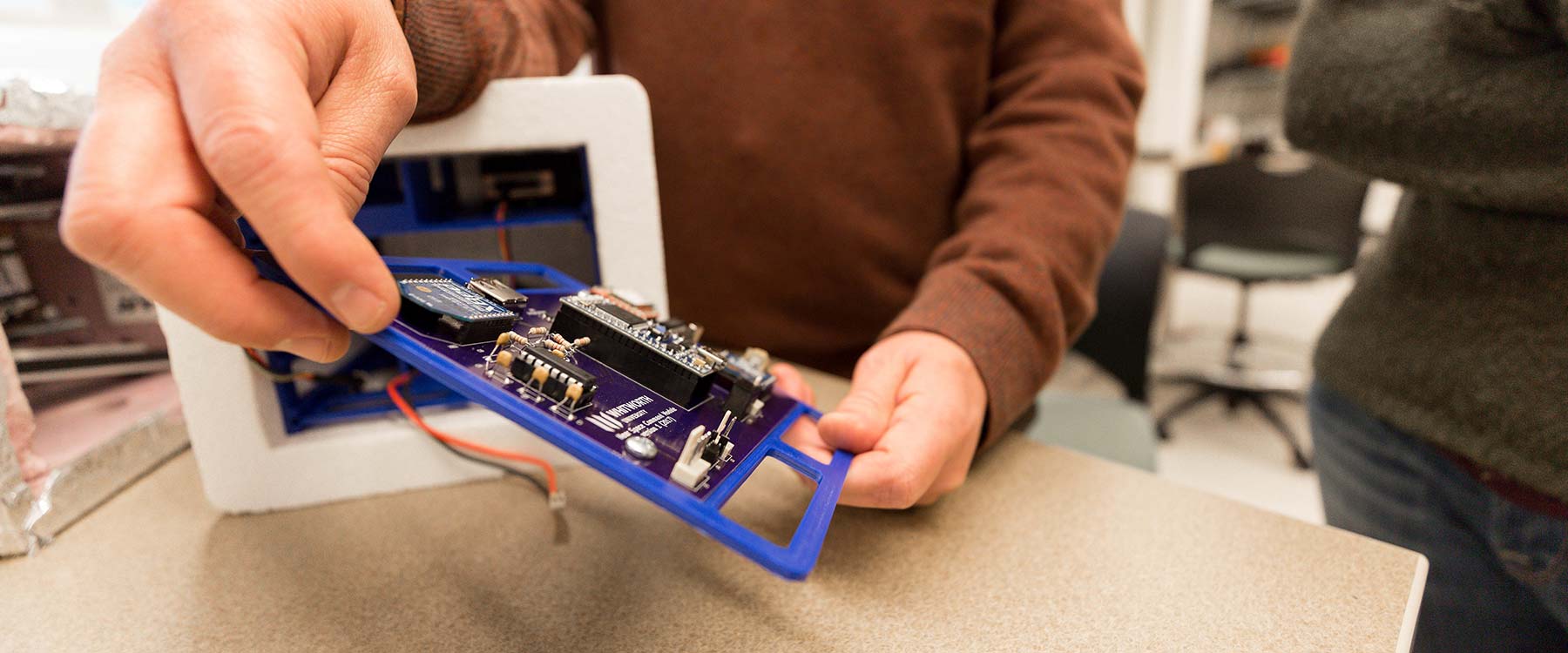High-Altitude Balloon Research
Whitworth engineering & physics students are studying the effects of extreme conditions at more than 100,000 ft. above in the Earth's atmosphere using helium-filled balloons. Students send cameras, temperature sensors and other experimental instruments into the stratosphere, a region of the Earth's atmosphere also known as near space, where the launched materials experience conditions such as low pressure, low temperature, intense ultraviolet light and high radiation exposure.
In connection to these experiments, Whitworth students and professors also collaborate with middle school students to conduct high-altitude science experiments in the classroom. This year, Whitworth students have been collaborating with a seventh-grade science class at Northwood Middle School to design experiments that include:
- Exposing rubber bands to stratospheric conditions to determine if that exposure has altered the bands' strength or elasticity.
- Exposing earthworms and ants to low pressure and very little oxygen to see which is better able to survive the extreme conditions.
- Exposing seeds to cosmic rays to detect any differences in germination and growth after the flight.
- Studying the performance of alkaline vs. lithium batteries in the low-temperature environment of near space.
- Exposing water plants to low temperatures and high radiation, comparing the cell structure before and after the flight.
Funding for Whitworth's high-altitude research program comes from NASA's Washington Space Grant Consortium, and support for Whitworth's collaboration with Northwood Middle School students has been provided by Mead Education Foundation.
